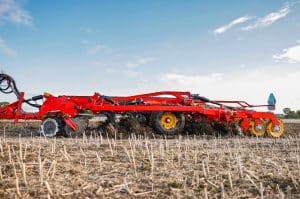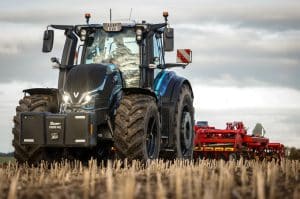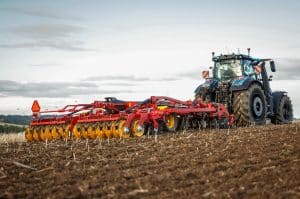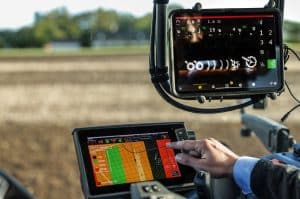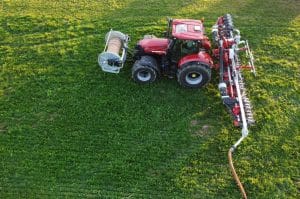At a collaborative project in Northern Denmark, Väderstad and Valtra are conducting a field study to push the boundaries further, as well as share practical experience. At the farm, different setups of the working zones of the TopDown are tested under various soil conditions.
In the field study, the TopDown is working after a prescription map, where each of the working zones of the cultivator are set individually. This means that the working depth of the discs, tines, levelers, as well as the pressure on the packer is adjusted for each trial plot. The 32m wide plots include different soil types, to enable a verification of which setting is optimal for which field condition.
“The objectives of the field study are to determine the optimal settings for the working zones of the cultivator to maximize crop yield. In addition, we aim to increase the understanding about the impact of different tillage depths and consolidation levels on crop emergence across varying soil types”, says Nina Pettersson, Chief Agronomist, at Väderstad.
The test field will be seeded with winter wheat after cultivation. The Väderstad and AGCO Agronomists, will monitor the germination and early emergence this autumn, as well as evaluate the crop growth as well as soil compaction levels in the coming spring. The yield data will be gathered after combining the crop next year.
When conducting the test in the field, the fuel consumption and field efficiency data from the tractor was extracted.
“The introduction of E-Services on the TopDown and Opus cultivators allows the machines to use prescription maps to adjust the machine settings automatically on the go using a field map. This means that before going to the field, the farmer can program how the individual working zones – discs, tines, levelers, and packer – should behave at specific spots in the field”, says Wolfram Hastolz, Commercial Manager Tillage equipment, at Väderstad, and continues:
“Decisions can be based on, for example, a soil type map, yield map, or the farmer’s own experience of the field characteristics. In the cab, the prescription map is inserted into the tractor ISOBUS terminal, which then connects to the Väderstad E-Control system to take control of the machine.
Most fields have a variation of soil conditions within their boundaries. Heavier soils often mean challenges in creating a seedbed, while some lighter soils tend to self-compact, calling for a more intensive tillage. Often, all soil types on a field are being worked the same way. By adapting the tillage to the soil conditions, there is a possibility to improve the soil health and save diesel, while achieving the same yield.
“Soil should neither be worked too much or too little. By adapting the tillage to the actual needs, we make sure to disturb the soil as little as possible. This minimizes the possible negative impacts of tillage, such as carbon losses, moisture evaporation and erosion, according to Nina Pettersson.
Results of the prescription map field study will be shared openly.



